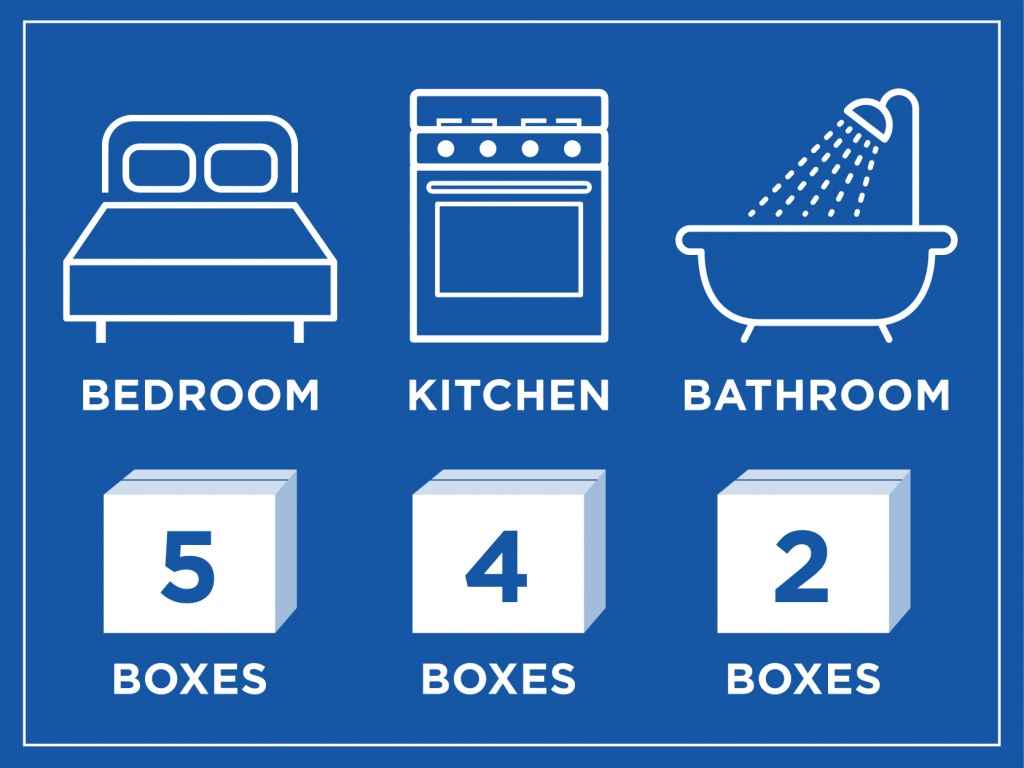
The prospect of a new home is exciting. Packing up and moving your stuff – not so much.
We asked Sarah Roussos-Karakaian, whose New York company We OrgaNYze specializes in packing and unpacking for residential moves, to help us design the perfect stress-free move.
“The biggest mistake people make when they pack,’’ she says, “is not being specific enough.”
The American Moving & Storage Association recommends that you follow a packing timeline for moving and start preparing for a move eight weeks out. This will give you time to go through everything you own and determine what you’re bringing, giving away or selling. If you’re enlisting friends, give them plenty of notice so you can be sure you’ll have the help you need. Take the time to ask your agent what’s covered during your move.
Taking time on the front end to organize will ensure a much better moving and unpacking experience. Below is a bi-weekly moving packing checklist to help you manage your schedule:
8 WEEKS AHEAD
- Start a folder or binder. Keep everything related to your move in one place: packing lists, estimates, receipts, mortgage paperwork, etc.
- Do an inventory. Go room by room estimating the cubic footage of your stuff to determine how many boxes you’ll need. Measure big furniture to figure out what goes where in the new home.
- Purge what you can. Everything you take will cost money to move, so don’t cart the same unused stuff from attic to attic; be ruthless and get rid of it. Sell it on eBay, or donate it, and take a tax deduction.
- Order new appliances. If your new home doesn’t come with a refrigerator or stove, or needs an upgrade, order now, so the appliances are delivered before you move in.
6 WEEKS AHEAD
- Research moving companies. Get in-person, written estimates, and check references with the Better Business Bureau. Confirm they are licensed and insured by verifying their USDOT number. Interstate movers must be registered with the U.S. Department of Transportation. Get at least three in-home estimates from moving companies and make sure there’s a binding “not-to-exceed” amount on any contract you sign. You don’t want unpleasant surprises at the end of your move.
- Retain any specialty movers. Moving expensive or fragile items like art, antiques or a grand piano? Find movers who specialize. Pool tables, for example, typically require an expert to dismantle and reconstruct.
- Review your mover’s insurance. Ensure that the liability insurance your prospective movers carry will cover the replacement value of anything they might damage.
- Call utility companies. Arrange to have utilities turned off at your old home and turned on at your new place. Find out dates for garbage and recyclable pickup, as well as any restrictions about having packing debris picked up.
- Make travel arrangements. Moving long distance or shipping a vehicle? Make travel and auto transport arrangements now. If you have children, will they need to change schools? Get the necessary paper work filled out and records transferred. Pets? Schedule kennel time or ask a friend to keep your 4-legged friends out of the moving chaos.
- Gear up for packing. Some movers provide boxes. Stores like Home Depot, Lowe’s and Staples sell them. And some retailers or company mailrooms give them away. Get more boxes than you think you’ll need, particularly easy-to-lift small ones. Don’t forget packing tape, colored tape and markers for coding boxes, bubble wrap for mirrors and prints, and packing peanuts.
4 WEEKS AHEAD
- Start packing seldom-used items. Box out-of-season clothes and holiday ornaments before moving on to more frequently used items.
- Track boxed items. Create a spreadsheet with color-coded rows for each room and enough columns to cover all the boxes per room. As you pack, mark and number each box (e.g., “Kitchen 12”) on its 4 vertical sides (the top is hidden when boxes are stacked) with the relevant tape color. As you seal each box, list its contents in your spreadsheet, so you AND the movers will know what’s in each and where it goes.
- Use specialty containers. Get specialized boxes for TVs and wardrobes. Pull garbage bags over hanging clothes in clumps and tie the bags’ strings around the bunched hangers to keep contents clean and easy to handle. (Color-code these bundles, too.) Seal liquids in plastic storage tubs with lids.
- Keep hardware together. Put screws and other hardware from anything you disassemble – sconces, TV wall mounts, shelves, etc. – in sealed plastic bags taped to the items themselves. Just be careful not to affix the bags onto a surface that could be damaged by the tape’s adhesive.
- Update your address. Change your address with USPS to have your mail forwarded to your new address. Give your new address to family members, your banks and credit card companies, magazines and newspapers, the Department of Motor Vehicles and your employer. Be sure to update the extensive list of contacts you should inform when you move.
2 WEEKS AHEAD
- Finish packing the house. Label the boxes you pack last that contain your most-used items – laptops, phones, everyday dishes, remote controls, etc. – with three strips of colored tape. Tell movers to keep these boxes easily accessible in the new location.
- Confirm your dates. Call utility companies to make sure your services are scheduled to be connected the correct day, and double-check the move time with the movers. If you’ve arranged to have your old home cleaned, it’s smart to double-check that task, too.
- Defrost your fridge and drain gas-powered equipment. Unplug the refrigerator to give it time to defrost and drain. Drain gas and oil from mowers and similar equipment, and discard the fluids properly.
- Create a “First Night Kit.” Pack a box or overnight bag for each family member with a change of clothes, toiletries and medications, plus favorite toys for kids and pets. Include cleaning supplies, toilet paper, snacks, a utility knife (for unpacking) and a first-aid kit.
- Pack your valuables. Carry jewelry, medications, easily damaged items and other valuables with you.
- Do last-minute errands. Get cash to tip the movers and buy pizza for the family. Take pets to a kennel or drop them off with a friend. Pick up the keys to your new home.
Moving Day
- Arrive ahead of the moving truck. Give yourself plenty of time to figure out furniture arrangement and where things go.
- Direct the operation. Explain your system to the moving firm’s foreman, and give him a copy of the spreadsheet before his team begins working. Lay cardboard or a plastic sheet on the floor of the moving truck.
- Take care of your movers. Moving is tough work, so plan to provide water and lunch for the movers. As for tipping: For a half-day job, $10 per mover is the rule of thumb; for a full-day, $20 each.
- Give your old home a clean sweep. If you’re a homeowner, you’ll probably have to clean your house before the closing. If you rent and have a security deposit, take photos after you’re done — in case of disputes. Consider hiring a professional cleaning service to save you time and effort.
- Unpacking in your new home. When you arrive at your new place, unpack the necessities first, like your bed, basic kitchen supplies and comfortable clothing to wear as you unpack the rest. Arrange the furniture first to make sure there’s a clear path to the bed. Make the beds now, so at the end of the day, everyone can just tumble in — exhausted.
Moving Truck Tips
Renting a truck to haul your stuff can involve all kinds of complications — from choosing the right size of van or truck to packing it properly and making adjustments to drive it safely. Brandon Scivolette, president of Elite Moving Labor, a national moving company, shares what he knows to make your move go smoothly.
1. Practice driving a moving a truck
Truck rentals range in size from 10 to 26 feet. Clearly, you need to prepare for this new experience behind the wheel. If you have the opportunity, give the truck a trial spin in the parking lot, testing its overall visibility as well as how it handles and turns.
“You need to realize that these trucks don’t have rearview mirrors, so you have to get used to that,” Scivolette says. “Using a car carrier will change how you reverse. If you want to reverse to the left, you turn the wheel right. This can confuse people.”
2. Inspect the moving truck
Rental trucks will have maintenance issues from time to time, especially if they have a lot of miles on them.
“The most important things to look at are the condition of the tires and the total miles,” Scivolette says. “The more miles the truck has, the more likely it will break down. So if it has a lot, ask if you can exchange it for a more recent model.”
3. Choose the right truck size
The general standard says that a 14-foot truck will move one to two bedrooms. Or that a 12-foot truck will haul 450 cubic feet worth of home “stuff.” Scivolette recommends 12 feet or less for small, one-person moves; up to 17 feet for a small home or one- to two-bedroom apartment; and no less than 20 feet for single-family or town homes.
“If you’re ever unsure,” he says, “you should always defer to a larger truck size — especially if you’re relocating a long distance and multiple trips aren’t an option.”
4. Pack correctly
Establish a foundation with heaviest items first. Build in tiers from left to right, floor to ceiling and heaviest to lightest.
“Stacking items is fine as long as they’re of comparable size and weight,” Scivolette says. “After completing a first row from left to right, place fillers — nonbreakable items like clothes, blankets and pillows that can be shaped into a space — into the gaps. Use mattresses and box springs to wall off and secure tiers. Place mirrors and paintings between mattresses and box springs.”
5. Pick a good moving time
If you can, schedule your move to make sure you don’t run into prime season.
“The most expensive time to move is between March and October,” Scivolette says. “Throughout the year, it’s more costly in the beginning and end of every month, especially on weekends. Also, Memorial Day weekend and the last weekend in July are the two busiest ones of the year.”
First Week After the Move
- Pick up the pets. Make sure you have their food, water and litter boxes.
- Change all exterior locks. Get a new set of keys to the house and make copies for all family members and a few extras.
- Unpack the kitchen. Find those final-items “three stripes” boxes and unpack.
- Congratulate yourselves. Sure, there’s still plenty to do and you probably won’t get as far as you’d like in the first week. Says Roussos-Karakaian: “If you’re hanging art in the first seven days, you’re a rock star.”
Keep your valuables safe before, during and after your move with homeowners insurance. Learn more about homeowners insurance and renters insurance that Nationwide offers.
And, now that you’ve found the home of your dreams, make sure your loved ones can stay there if the unexpected happens. Learn how easy and affordable it can be to get the mortgage protection you need with term life insurance.




